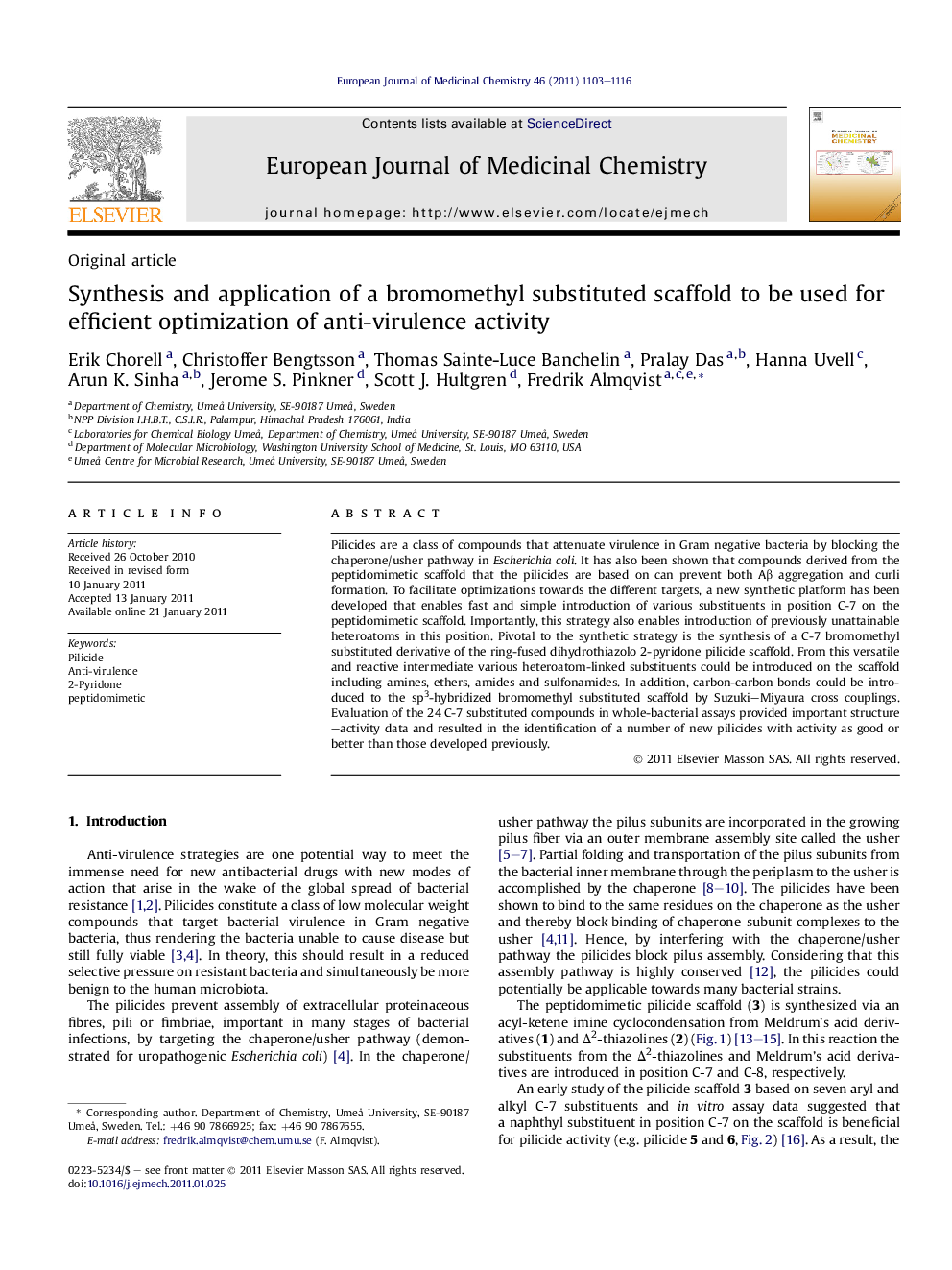| Article ID | Journal | Published Year | Pages | File Type |
|---|---|---|---|---|
| 1397561 | European Journal of Medicinal Chemistry | 2011 | 14 Pages |
Pilicides are a class of compounds that attenuate virulence in Gram negative bacteria by blocking the chaperone/usher pathway in Escherichia coli. It has also been shown that compounds derived from the peptidomimetic scaffold that the pilicides are based on can prevent both Aβ aggregation and curli formation. To facilitate optimizations towards the different targets, a new synthetic platform has been developed that enables fast and simple introduction of various substituents in position C-7 on the peptidomimetic scaffold. Importantly, this strategy also enables introduction of previously unattainable heteroatoms in this position. Pivotal to the synthetic strategy is the synthesis of a C-7 bromomethyl substituted derivative of the ring-fused dihydrothiazolo 2-pyridone pilicide scaffold. From this versatile and reactive intermediate various heteroatom-linked substituents could be introduced on the scaffold including amines, ethers, amides and sulfonamides. In addition, carbon-carbon bonds could be introduced to the sp3-hybridized bromomethyl substituted scaffold by Suzuki–Miyaura cross couplings. Evaluation of the 24 C-7 substituted compounds in whole-bacterial assays provided important structure–activity data and resulted in the identification of a number of new pilicides with activity as good or better than those developed previously.
Graphical abstractFigure optionsDownload full-size imageDownload as PowerPoint slideResearch highlights► Pilicides are anti-virulence compounds based on a ring-fused 2-pyridone scaffold. ► A synthetic platform for efficient optimization of anti-virulence activity has been developed. ► Sterically demanding and flexible substituents improve activity. ► Amines and smaller amide- and sulfonamide-linked substituents are not tolerated.
